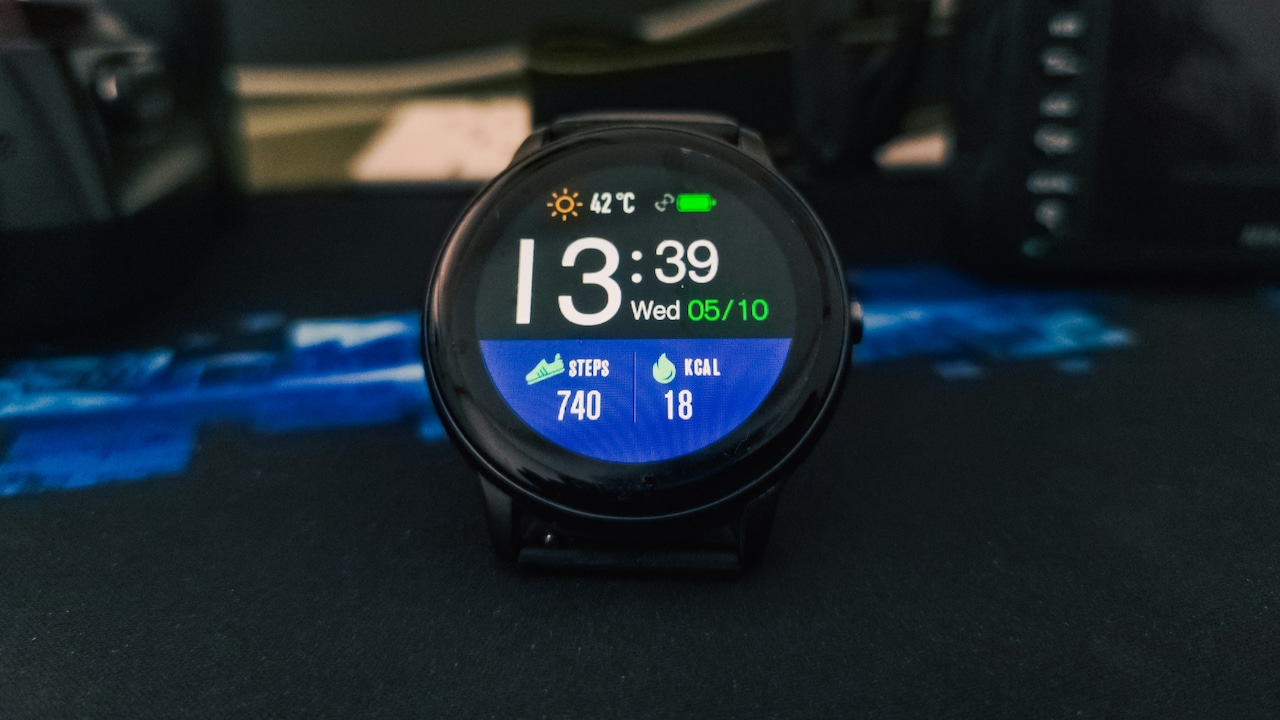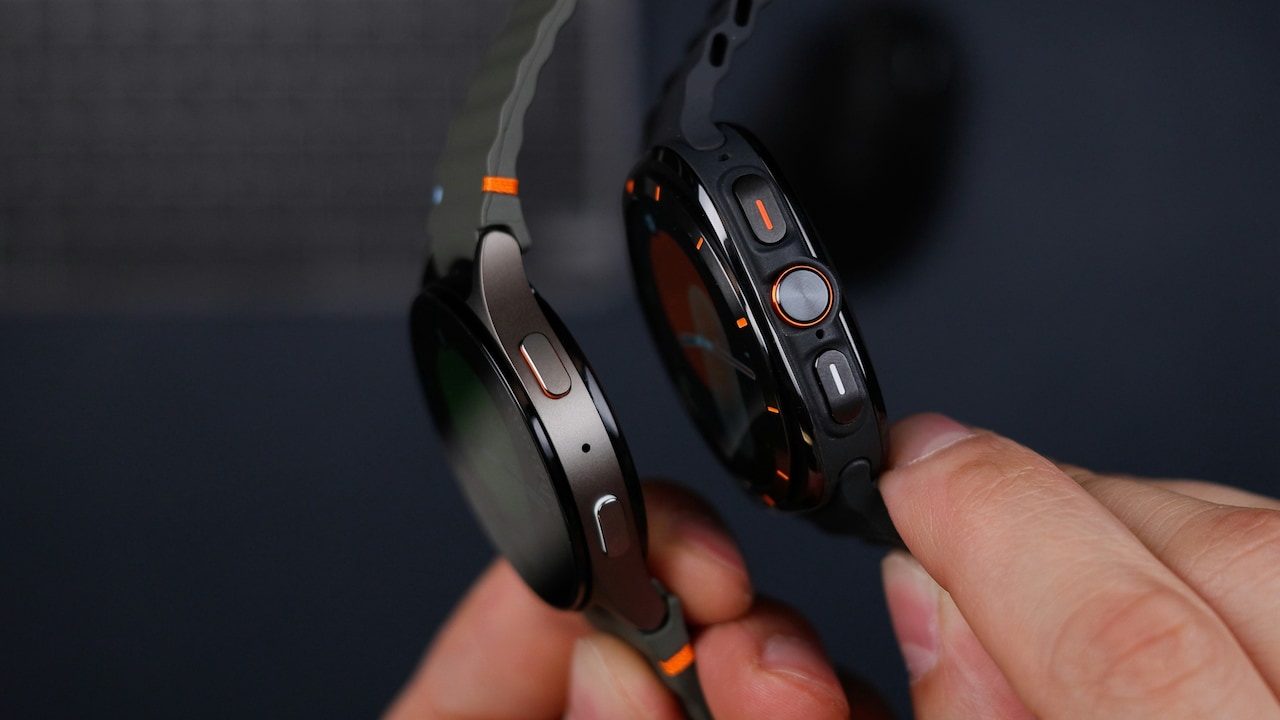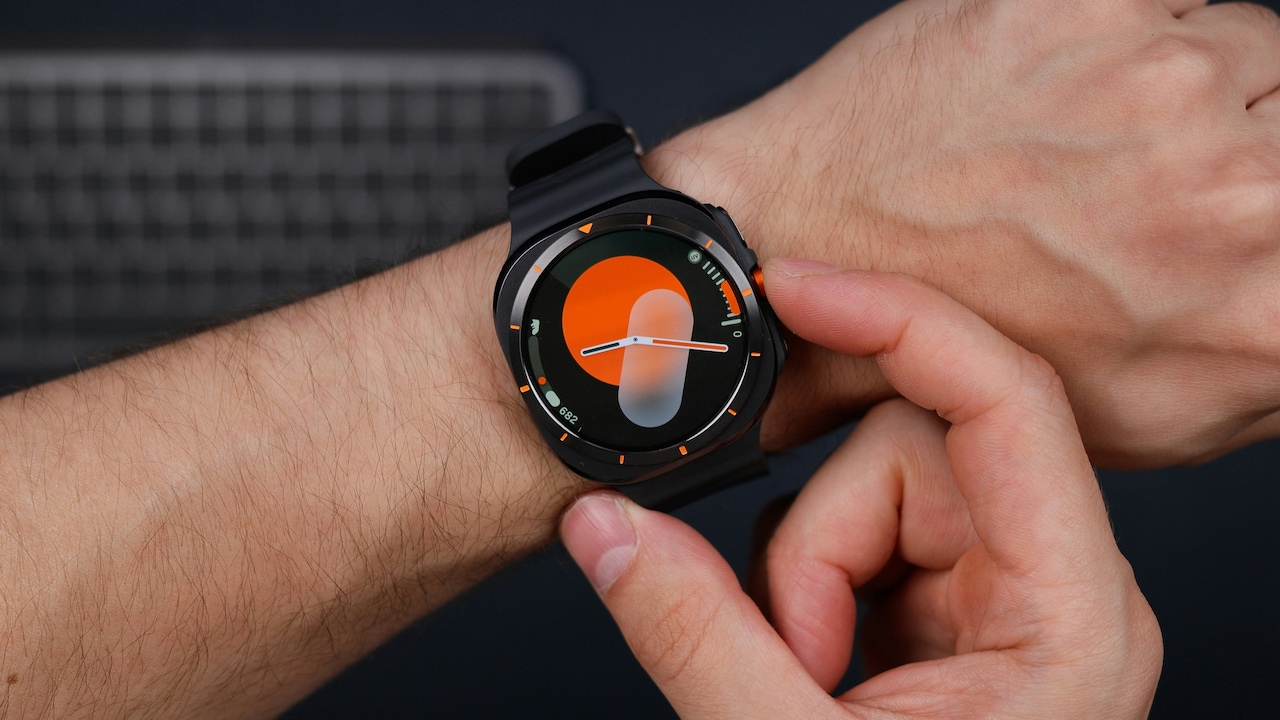How To Choose A Smartwatch: Battery vs Display vs Sensors | The Right Priority Order
A good smartwatch can simplify mornings, guide workouts, and keep life running smoothly without constant phone checks. This guide will help set the right priorities, battery, display, sensors, and explain how to choose the right smartwatch. It helps you to understand which features matter the most, and why.

Smartwatch Buying Tips: How To Prioritise Battery, Display And Sensors.
A smartwatch today does far more than tell time. It counts steps, takes calls, tracks heart rhythms, guides breathing, reminds about meetings, nudges for water breaks, and even unlocks doors in some homes. With so many features squeezed into that tiny screen, it's tempting to pick the model with the flashiest ad or the biggest discount.
A smartwatch becomes a companion only when it blends endurance, comfort, accuracy, and a bit of flair. A battery that needs a charger twice a day drains mood as fast as it drains power. A dim display loses charm under the afternoon sun. Through this guide, you can learn how to choose a smartwatch with the kind of battery, display, and sensors you actually want.

Smartwatch Buying Tips: How To Prioritise Battery, Display And Sensors; Photo Credit: Pexels
Key Factors That Shape the Perfect Smartwatch
1. Battery Life: The Heart of Everyday Comfort
A smartwatch that runs out of power by evening turns into a bracelet with attitude. A long-lasting battery brings freedom from constant hunting for a socket. For most people, battery life should sit at the top of the priority list because everything else depends on it. A fancy AMOLED screen, advanced GPS, or heavy health tracking needs stable power support.
In bustling cities, where an average day stretches from early morning commutes to late evening social calls, a watch with at least 5–7 days of battery life fits most lifestyles. Fitness-centric users may demand even more, especially when using continuous heart-rate tracking or outdoor workouts with GPS. Fast charging also matters; plugging in for 30–40 minutes and gaining enough juice for a couple of days feels reassuring. It's worth checking real-world reviews because advertised battery life often assumes lighter usage than most people follow.
A dependable battery keeps the watch useful at all hours, whether managing calls during meetings, guiding workouts, tracking sleep, or waking with gentle haptic alarms. Consistent uptime makes the smartwatch feel like a natural extension of the day, not a device that sulks when overworked.
2. Display Quality: Where Style Meets Function
A beautiful display doesn't just look good. It improves readability, enhances navigation, and lifts the overall experience. Bright sunlight can turn some screens into mystery puzzles. A strong display cuts through glare and delivers crisp clarity even during a midday stroll.
AMOLED screens offer vibrant colours, deeper blacks, and smoother animations. They make watch faces pop and menus glide effortlessly. LCD screens help save battery, though they appear slightly muted in comparison. The choice depends on usage: someone who checks notifications often or enjoys stylish watch faces benefits more from an AMOLED screen.
Screen size matters too. A larger display helps type replies more comfortably and view charts during workouts. Yet an oversized watch may feel awkward on smaller wrists. A 1.3–1.5-inch screen generally suits most hands without feeling bulky. Touch responsiveness deserves attention because sluggish gestures create frustration. A good display balances beauty with practicality, ensuring the smartwatch looks modern while working smoothly throughout the day.
Also Read: 5 Best Smartwatches Under ₹20,000 For Battery And Health Tracking, From Titan, Huawei to OnePlus
3. Build Quality & Comfort: The Feel on the Wrist
A smartwatch stays on the wrist for long hours, so comfort becomes a silent hero. A body that feels too heavy or a strap that irritates the skin ruins the experience. Lightweight aluminium or polycarbonate cases offer comfort for daily use. Stainless steel adds premium feel but increases weight.
Strap flexibility also matters. Silicone straps suit workouts and humid weather. Leather feels stylish at events. Metal straps add elegance but may feel warm outdoors. A watch with universal strap compatibility gives room for customisation without spending much.
Durability plays a role in real life. Crowded buses, gym sessions, kitchen chores, or weekend treks can expose the watch to rough moments. Watches with IP68 or 5ATM water resistance manage sweat, rain, and occasional splashes without worry. A strong glass, preferably tempered or Gorilla Glass, protects against accidental bumps. A smartwatch should look good, feel good, and survive the week without demanding constant pampering.
4. Health Sensors: Reliability Over Fancy Labels
Every smartwatch boasts a list of sensors, heart rate, SpO2, stress monitoring, sleep tracking, and more. Yet numbers mean little unless the sensors deliver dependable accuracy. Good health tracking starts with a reliable optical heart-rate sensor. A solid sensor helps monitor workouts, track daily activity, and spot irregularities.
SpO2 readings help during travel at higher altitudes or when monitoring breathing patterns during sleep. While these features offer helpful insights, they cannot replace medical equipment. Accuracy varies across models, so consistency matters more than one-time perfection.
Sleep tracking should recognise light, deep, and REM cycles. Many watches also offer breathing scores and snore detection. These features help understand sleep quality better than simple “hours slept” data. Some watches include temperature sensors and ECG, though these tend to push the budget upward. Instead of chasing every feature, it's better to pick a watch with dependable core sensors that deliver stable readings. Reliable data encourages healthier habits and thoughtful lifestyle changes.

Smartwatch Buying Tips: How To Prioritise Battery, Display And Sensors; Photo Credit: Pexels
5. Fitness Tracking: Making Workouts Meaningful
A smartwatch transforms workouts into measurable routines. Step counts alone rarely show the full picture. Strong fitness tracking includes automatic workout recognition, detailed heart-rate zones, GPS accuracy, and personalised recommendations.
Anyone who walks or runs outdoors benefits from built-in GPS. It maps routes more accurately than relying on a phone. Cyclists, swimmers, and strength trainers value watches that recognise varied movements and offer specific modes for each activity. Many watches also calculate VO₂ max, recovery times, and movement efficiency. These metrics help users train smarter.
A useful fitness system encourages small improvements, whether it's beating last week's distance, managing heart rate better, or achieving daily movement goals. A smartwatch that celebrates minor victories feels like a friendly coach strapped to the wrist. When fitness becomes fun instead of a chore, consistency follows naturally.
6. Connectivity And Smart Features: Smooth Integration with Daily Life
A smartwatch shines when it blends effortlessly with the smartphone. Smooth Bluetooth connectivity, stable call handling, quick message replies, and app alerts matter more than rarely used advanced features.
Call clarity becomes important in crowded environments. A good microphone and speaker help manage quick conversations during office hours or during commutes. App notifications should arrive quickly without draining the phone battery. Compatibility with both Android and iOS brings flexibility, though some features may vary.
Music control, camera shutter, weather updates, alarms, reminders, and voice assistance add convenience. NFC payments still struggle across many regions, but watches offering this feature might help in future. The right smartwatch becomes a bridge between the phone and the day, reducing distractions and keeping life organised.
7. Software Experience: Smooth, Clean, and User-Friendly
The best hardware means little without a polished software experience. A clean, intuitive interface helps navigate menus without confusion. Swipes, buttons, and shortcuts should feel simple and natural. Quick access to settings, brightness adjustments, and workout options saves time during busy moments.
Regular software updates keep the watch secure and add new features. A strong app ecosystem also helps. A companion mobile app should display data neatly, offer detailed reports, and enable personalisation. Charts, history logs, and weekly summaries help understand long-term trends.
Many users enjoy changing watch faces to match outfits or moods. A large, high-quality library enhances personal expression. Smooth software makes the smartwatch feel modern, reliable, and enjoyable every day.

Smartwatch Buying Tips: How To Prioritise Battery, Display And Sensors; Photo Credit: Pexels
8. GPS, Wi-Fi & Extras: Choosing What Really Matters
Beyond the essentials, many watches offer bonus features, GPS, Wi-Fi sync, Bluetooth calling enhancements, altimeters, compasses, and emergency alerts. These sound impressive but only add value when used often.
GPS helps outdoor sports enthusiasts track routes without carrying a phone. A dual-band GPS system improves accuracy in areas with tall buildings. Wi-Fi syncing updates apps or downloads new watch faces even when the phone isn't nearby. An ambient light sensor adjusts brightness automatically. A vibration motor should feel sharp yet comfortable during alerts. An always-on display adds convenience but reduces battery life, so a good balance helps.
These extras elevate the experience only when they match lifestyle needs. A smartwatch should support daily habits, not clutter the wrist with unused features.
9. Budget & Value for Money: Getting the Best for the ₹ Spent
Smartwatch prices vary widely, from ₹1,500 budget models to premium devices crossing ₹30,000. Value comes from choosing features that make a real difference instead of paying extra for rarely used functions.
For general fitness tracking and notifications, the sweet spot usually lies between ₹3,000–₹8,000. These watches offer decent sensors, good battery life, and bright displays. Users who want better accuracy, stronger build quality, AMOLED screens, and smoother performance might explore the ₹8,000–₹15,000 range. Serious fitness lovers or professionals may consider premium models for advanced sensors, ECG, superior GPS, and refined software.
A good rule: spend on what improves daily life. If a feature won't be used at least twice a week, it doesn't deserve extra money. A smartwatch should feel like a wise investment, not a flashy impulse purchase.
10. Priority Order: What to Choose First
With so many features, the smartest way to decide is to sort them by importance. For most people, the rightful order goes like this:
Battery → Display → Sensors → Comfort → Fitness Features → Connectivity → Software → Extras → Brand Reputation → Price.
The battery deserves top place because everything depends on endurance. Display comes next because visibility defines usability. Accurate sensors matter for long-term health insights. Comfort ensures the watch stays on the wrist throughout the day. Fitness features add depth. Connectivity improves convenience. Reliable software keeps everything smooth. Extras offer flair but often remain optional. A trusted brand brings peace of mind, especially with warranty support. Finally, price seals the deal by ensuring value.
This order helps you quickly shortlist models and choose a watch that balances technology, practicality, and lifestyle needs.
Products Related To This Article
1. boAt Unisex Ultima Regal 2.01" AMOLED Display Smartwatch
2. NOISE Noise ColorFit Pulse 4 Max Smartwatch
3. CMF by Nothing Watch Pro, 1.96 AMOLED, BT Calling, AI Noise Reduction, GPS Smartwatch
4. boAt Chrome Horizon Smartwatch Video Watch Faces 1.51\" AMOLED Display
5. GOBOULT Crown R Pro 2 1.43''HD AMOLED, BT Calling, Zinc Alloy Frame Smartwatch
6. Fastrack Styler FS1 Pro1.97 AMOLED Display Functional Crown BT Calling IP68 Smart Watch
7. Realme Black Strap TechLife Watch S100 1.69 HD Display with Temperature Sensor Smartwatch
A smartwatch becomes a daily partner when chosen with clarity, not confusion. The right pick blends long battery life, a sharp display, dependable sensors, and comfort that lasts through workdays and weekends. Fitness tracking watches and smart features add convenience, while good software keeps everything together.
Rather than chasing the trendiest model, it helps to pick one that matches personal habits, routines, and budget. A well-chosen smartwatch feels less like a gadget and more like a companion that understands the rhythm of life, quietly guiding, nudging, and supporting every step of the day.
(Disclaimer: This article may include references to or features of products and services made available through affiliate marketing campaigns. NDTV Convergence Limited (“NDTV”) strives to maintain editorial independence while participating in such campaigns. NDTV does not assume responsibility for the performance or claims of any featured products or services.)
























